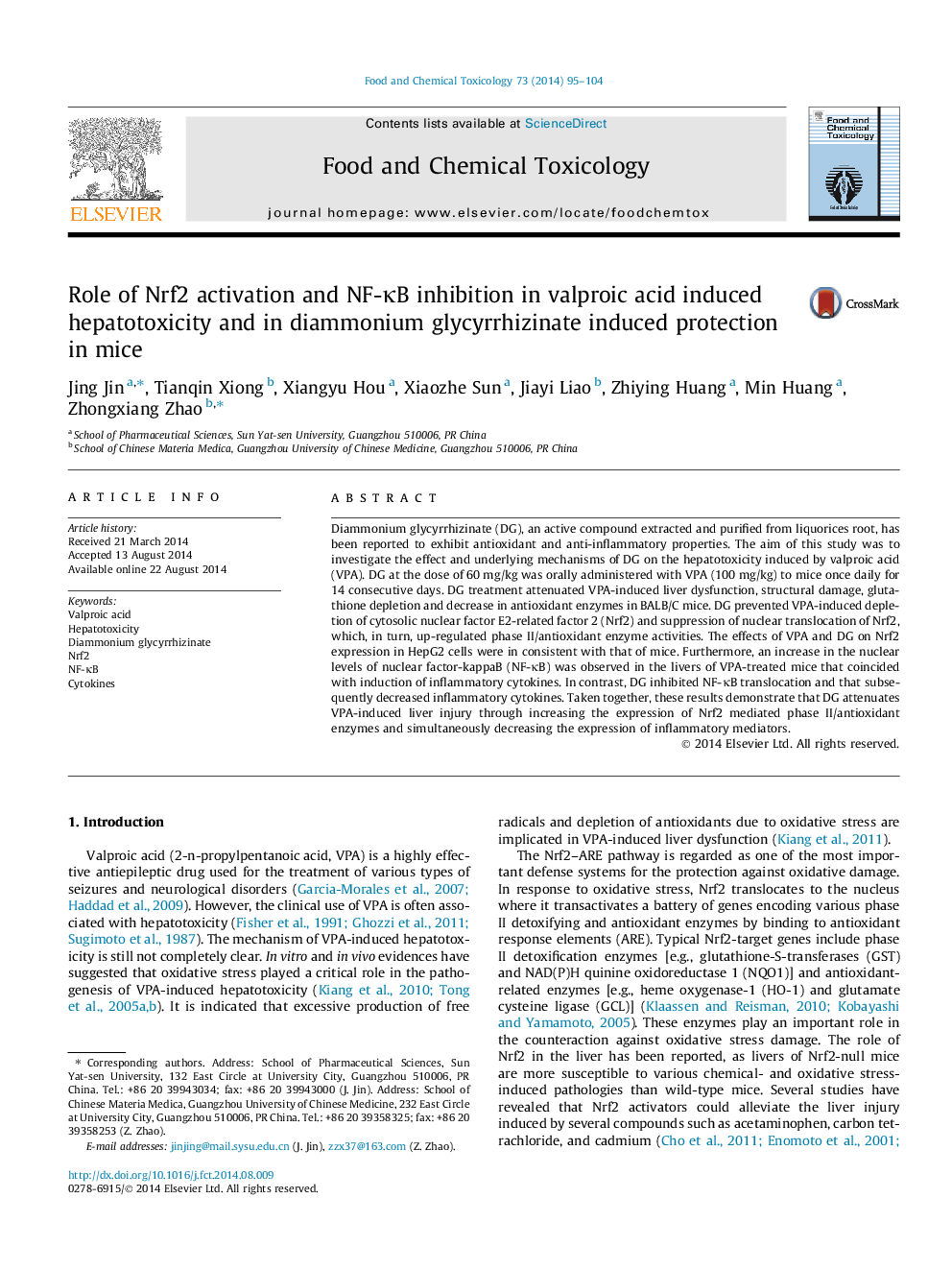| Article ID | Journal | Published Year | Pages | File Type |
|---|---|---|---|---|
| 5850054 | Food and Chemical Toxicology | 2014 | 10 Pages |
â¢VPA induced depletion of cytosolic Nrf2 and suppression of nuclear translocation of Nrf2.â¢Increased levels of NF-κB and proinflammatory cytokines were observed in the liver of VPA-treated mice.â¢DG attenuates VPA induced hepatotoxicity by activation of Nrf2 and inhibition of NF-κB.
Diammonium glycyrrhizinate (DG), an active compound extracted and purified from liquorices root, has been reported to exhibit antioxidant and anti-inflammatory properties. The aim of this study was to investigate the effect and underlying mechanisms of DG on the hepatotoxicity induced by valproic acid (VPA). DG at the dose of 60 mg/kg was orally administered with VPA (100 mg/kg) to mice once daily for 14 consecutive days. DG treatment attenuated VPA-induced liver dysfunction, structural damage, glutathione depletion and decrease in antioxidant enzymes in BALB/C mice. DG prevented VPA-induced depletion of cytosolic nuclear factor E2-related factor 2 (Nrf2) and suppression of nuclear translocation of Nrf2, which, in turn, up-regulated phase II/antioxidant enzyme activities. The effects of VPA and DG on Nrf2 expression in HepG2 cells were in consistent with that of mice. Furthermore, an increase in the nuclear levels of nuclear factor-kappaB (NF-κB) was observed in the livers of VPA-treated mice that coincided with induction of inflammatory cytokines. In contrast, DG inhibited NF-κB translocation and that subsequently decreased inflammatory cytokines. Taken together, these results demonstrate that DG attenuates VPA-induced liver injury through increasing the expression of Nrf2 mediated phase II/antioxidant enzymes and simultaneously decreasing the expression of inflammatory mediators.
